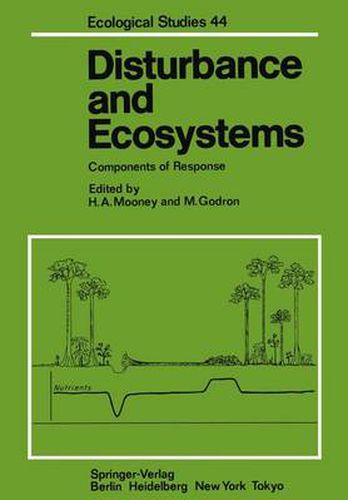Readings Newsletter
Become a Readings Member to make your shopping experience even easier.
Sign in or sign up for free!
You’re not far away from qualifying for FREE standard shipping within Australia
You’ve qualified for FREE standard shipping within Australia
The cart is loading…






This title is printed to order. This book may have been self-published. If so, we cannot guarantee the quality of the content. In the main most books will have gone through the editing process however some may not. We therefore suggest that you be aware of this before ordering this book. If in doubt check either the author or publisher’s details as we are unable to accept any returns unless they are faulty. Please contact us if you have any questions.
The earth’s landscapes are being increasingly impacted by the activities of man. Unfortunately, we do not have a full understanding of the consequences of these disturbances on the earth’s productive capacity. This problem was addressed by a group of French and U.S. ecologists who are specialists at levels of integration extending from genetics to the biosphere at a meeting at Stanford, California, sponsored by the National Science Foundation and the Centre National de la Recherche Scientifique. With a few important exceptions it was found at this meeting that most man-induced disturbances of ecosystems can be viewed as large scale patterns of disturbances that have occurred, generally on a small scale, in ecosystems through evolutionary time. Man has induced dramatic large-scale changes in the environment which must be viewed at the biosphere level. Acid deposition and CO increase are two 2 examples of the consequences of man’s increased utilization of fossil fuels. It is a matter of considerable concern that we cannot yet fully predict the ecological consequences of these environmental changes. Such problems must be addressed at the international level, yet substantive mechanisms to do this are not available.
$9.00 standard shipping within Australia
FREE standard shipping within Australia for orders over $100.00
Express & International shipping calculated at checkout
This title is printed to order. This book may have been self-published. If so, we cannot guarantee the quality of the content. In the main most books will have gone through the editing process however some may not. We therefore suggest that you be aware of this before ordering this book. If in doubt check either the author or publisher’s details as we are unable to accept any returns unless they are faulty. Please contact us if you have any questions.
The earth’s landscapes are being increasingly impacted by the activities of man. Unfortunately, we do not have a full understanding of the consequences of these disturbances on the earth’s productive capacity. This problem was addressed by a group of French and U.S. ecologists who are specialists at levels of integration extending from genetics to the biosphere at a meeting at Stanford, California, sponsored by the National Science Foundation and the Centre National de la Recherche Scientifique. With a few important exceptions it was found at this meeting that most man-induced disturbances of ecosystems can be viewed as large scale patterns of disturbances that have occurred, generally on a small scale, in ecosystems through evolutionary time. Man has induced dramatic large-scale changes in the environment which must be viewed at the biosphere level. Acid deposition and CO increase are two 2 examples of the consequences of man’s increased utilization of fossil fuels. It is a matter of considerable concern that we cannot yet fully predict the ecological consequences of these environmental changes. Such problems must be addressed at the international level, yet substantive mechanisms to do this are not available.